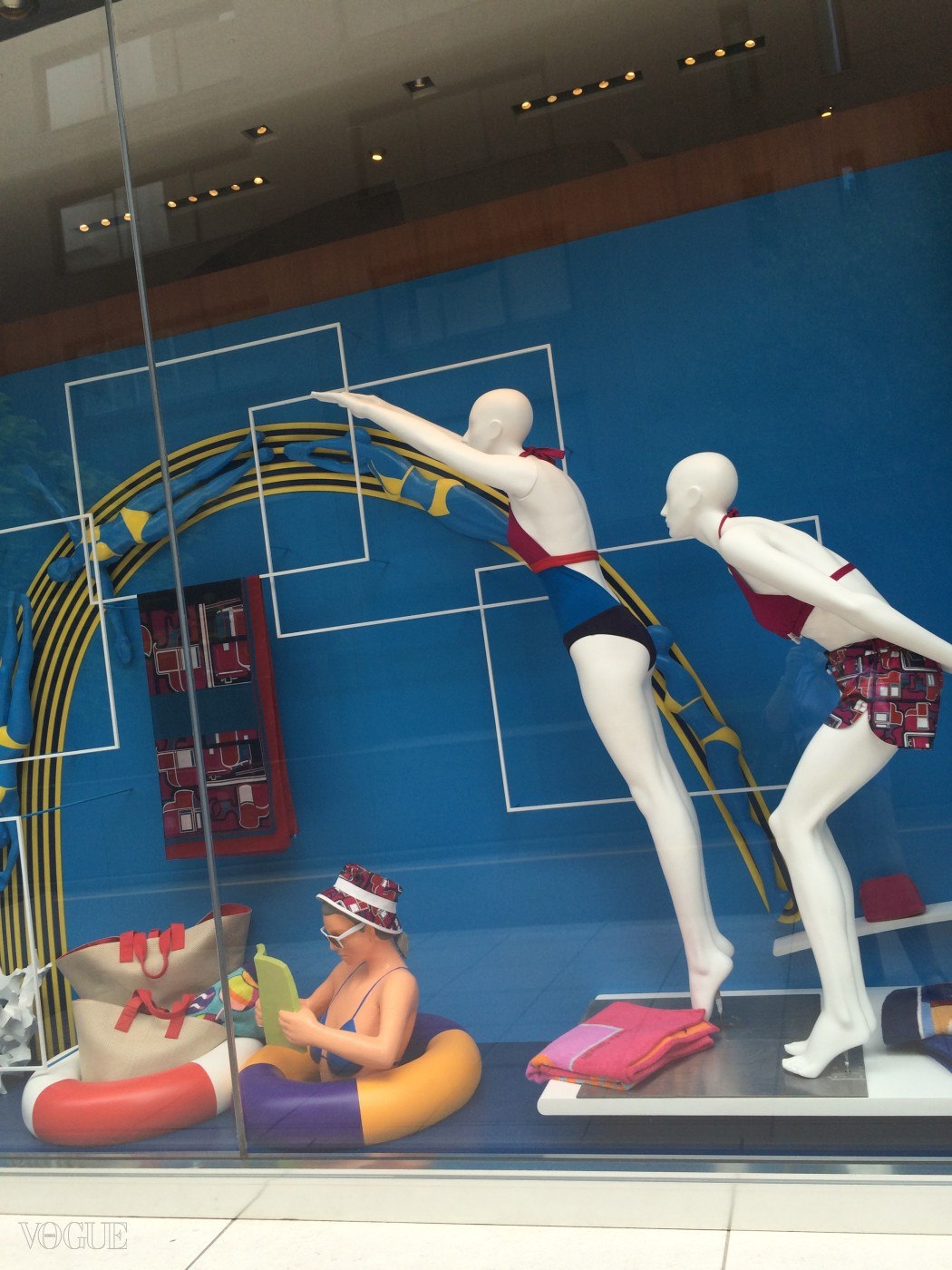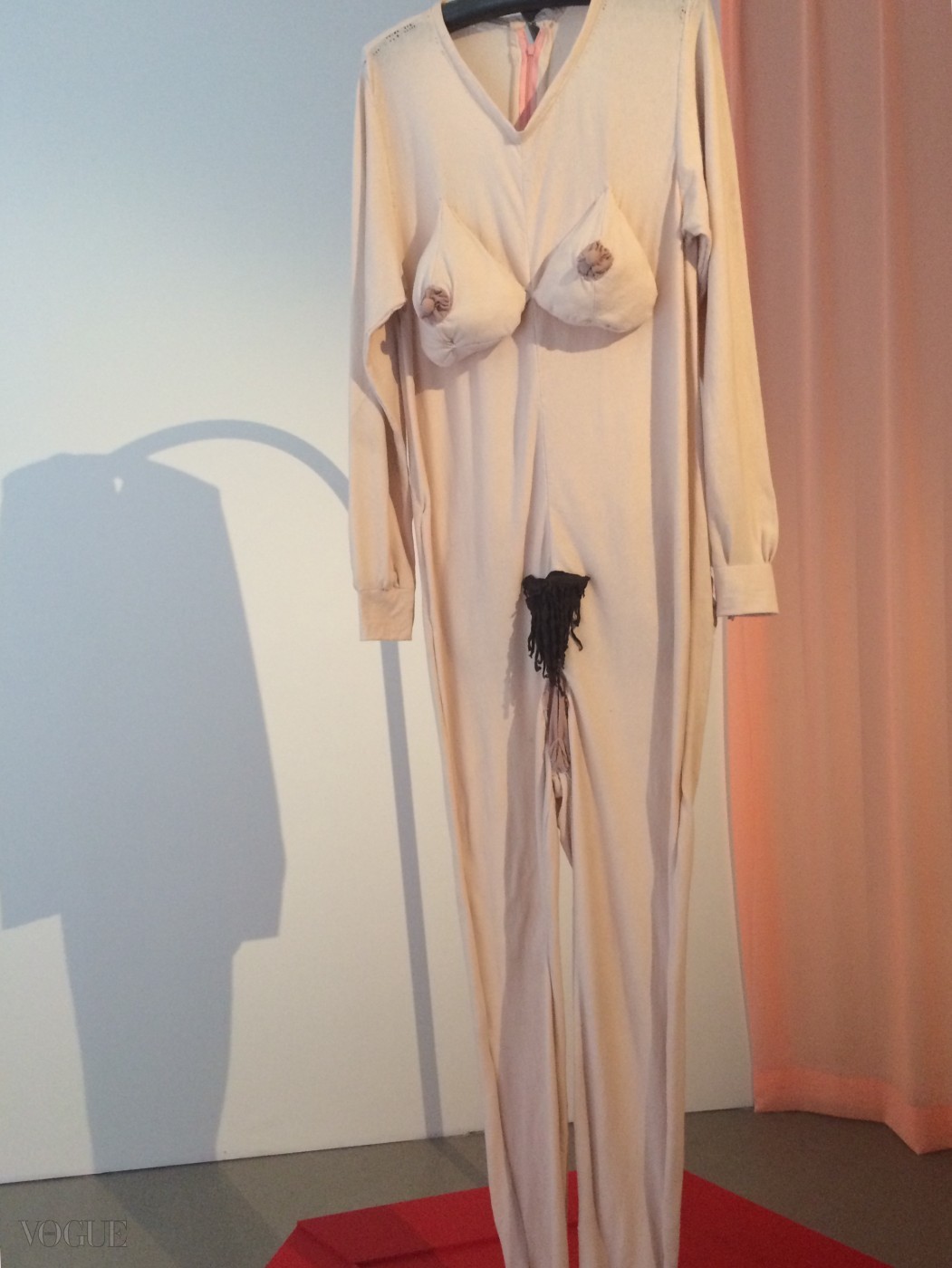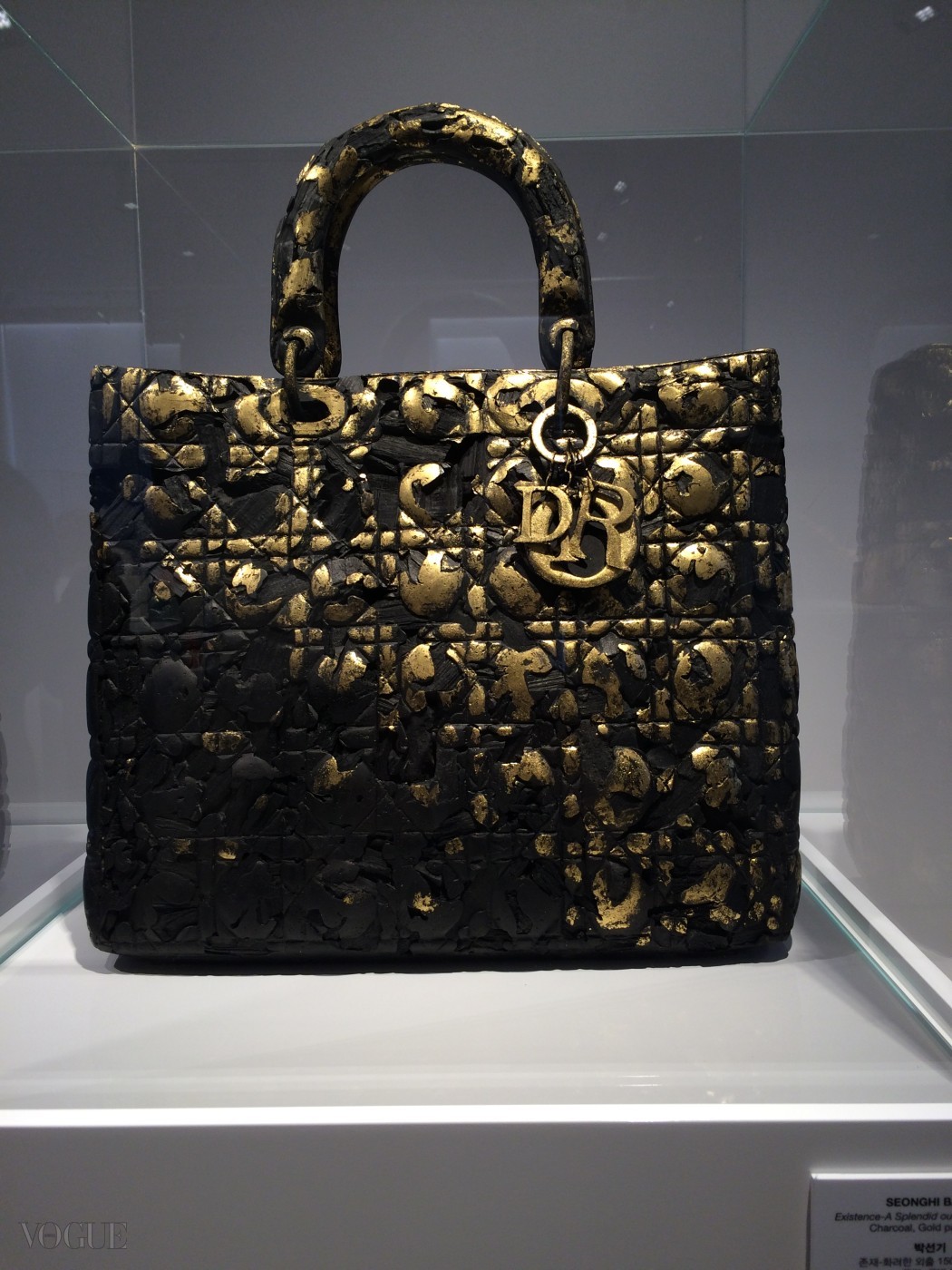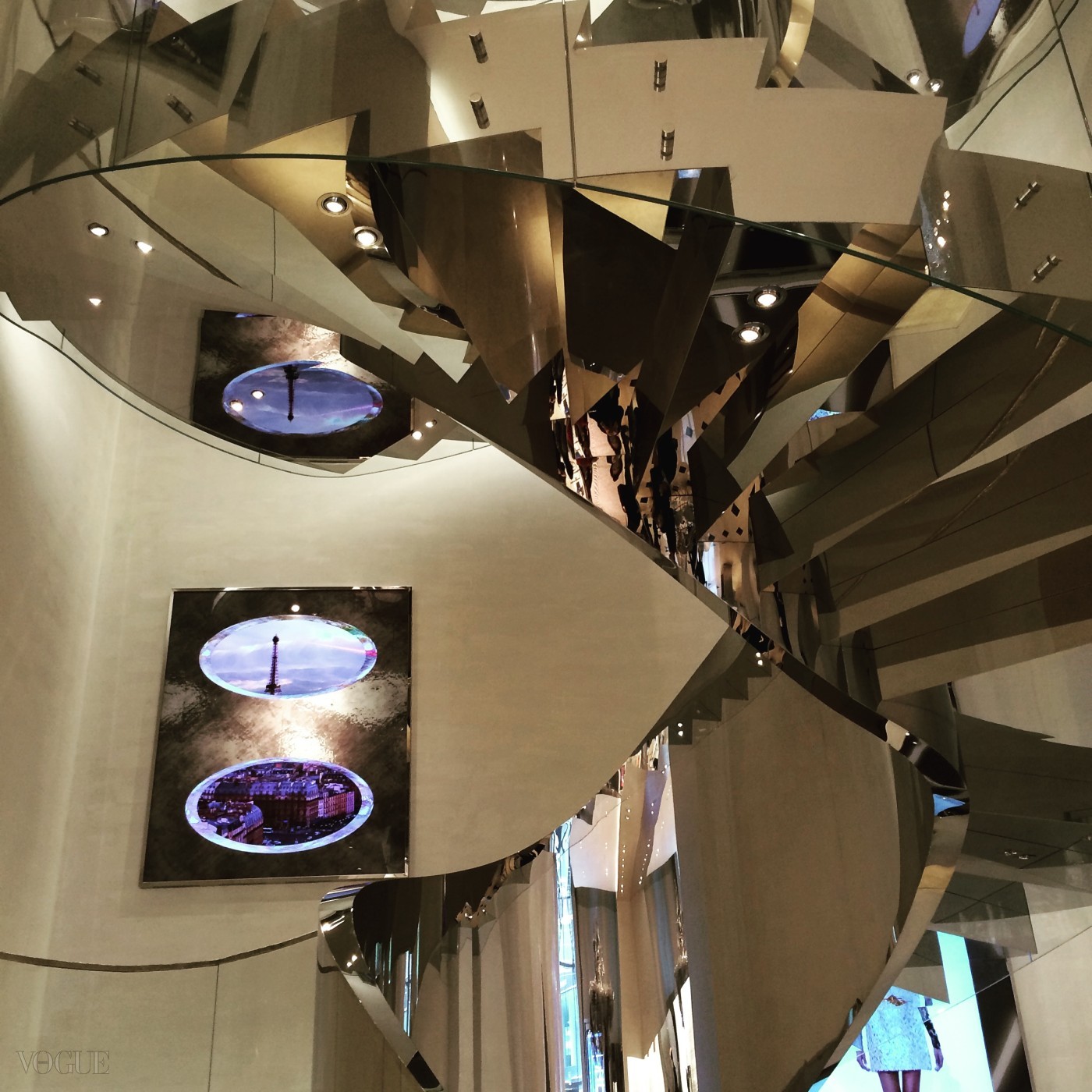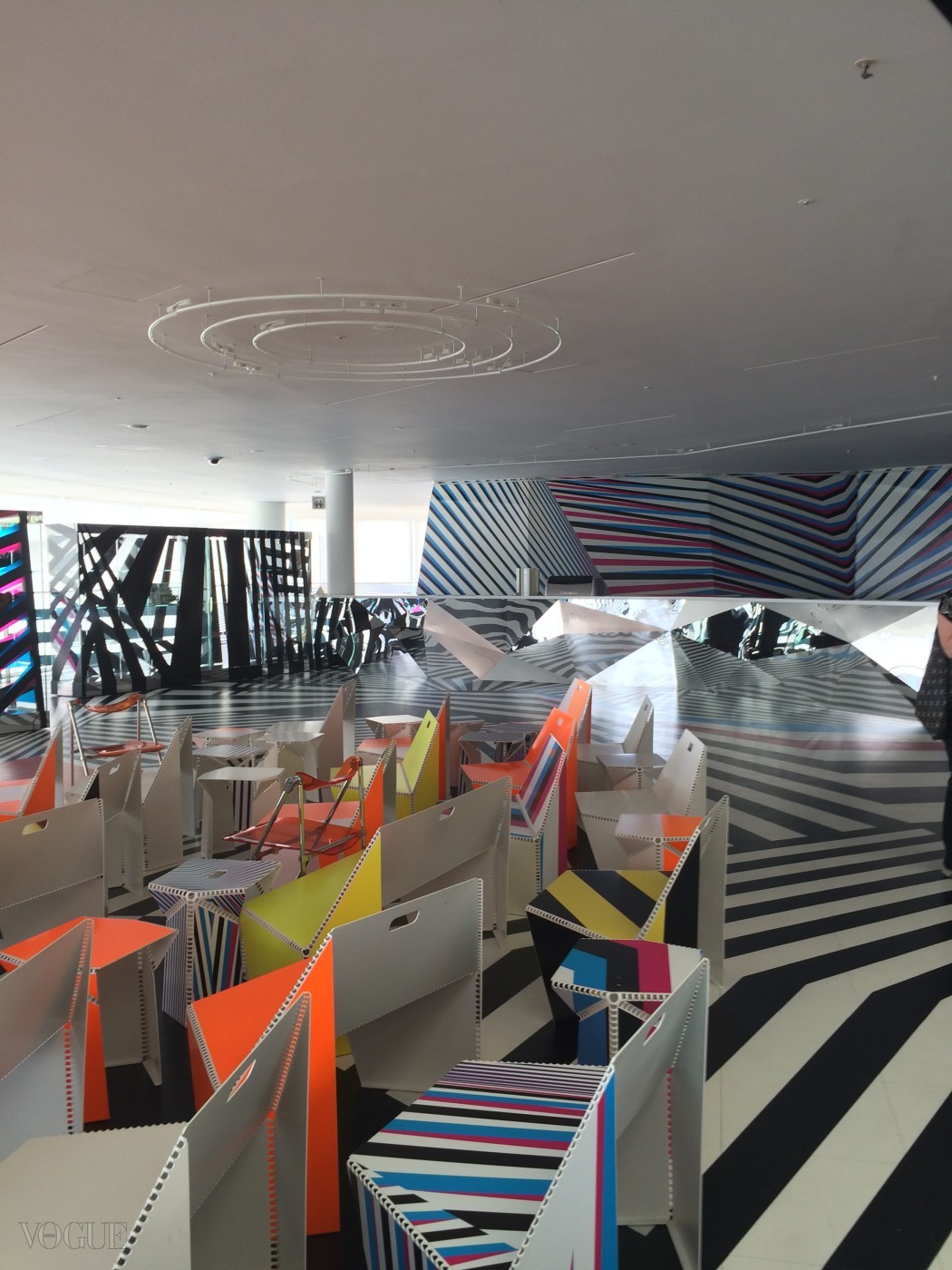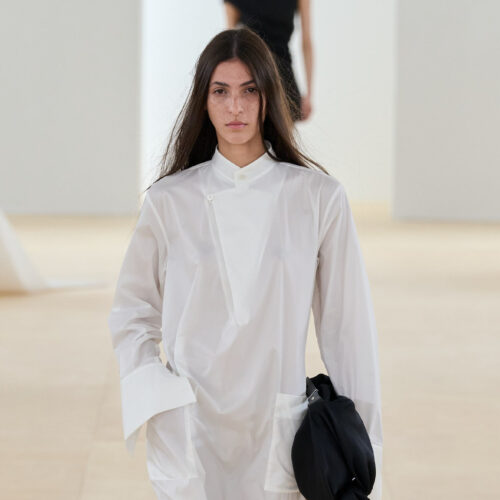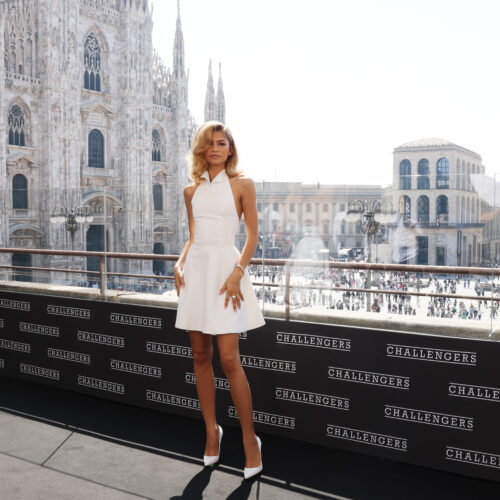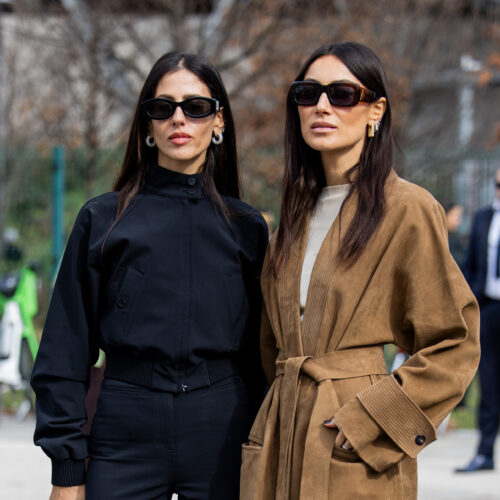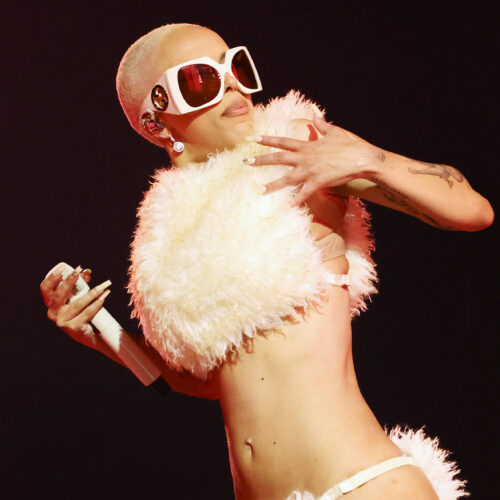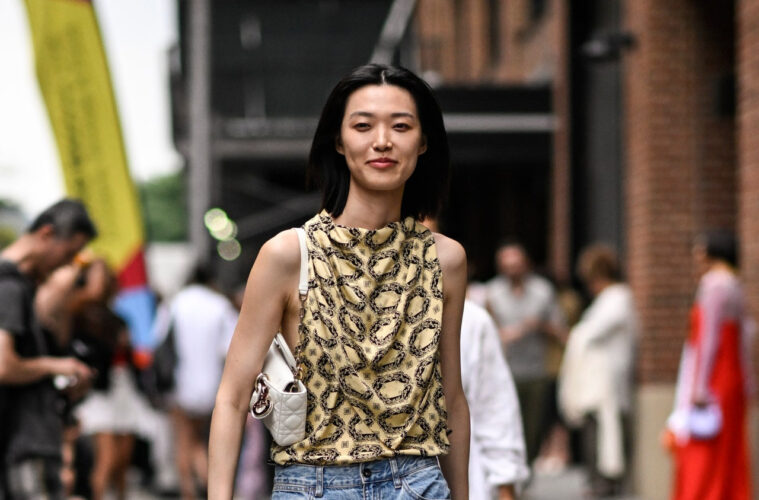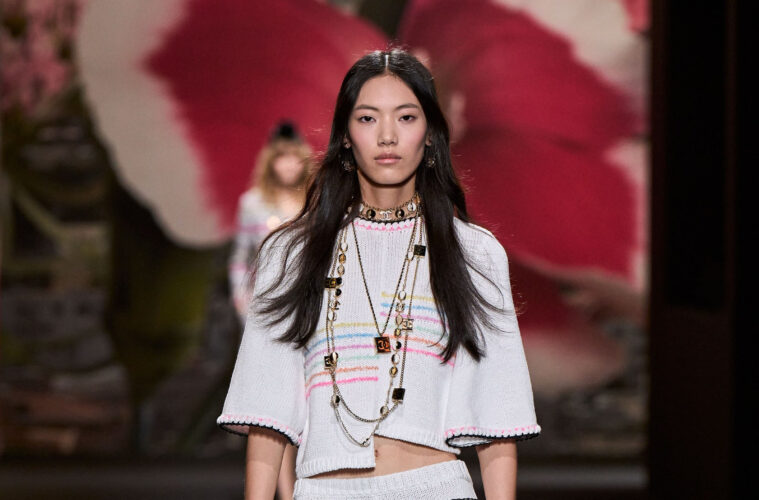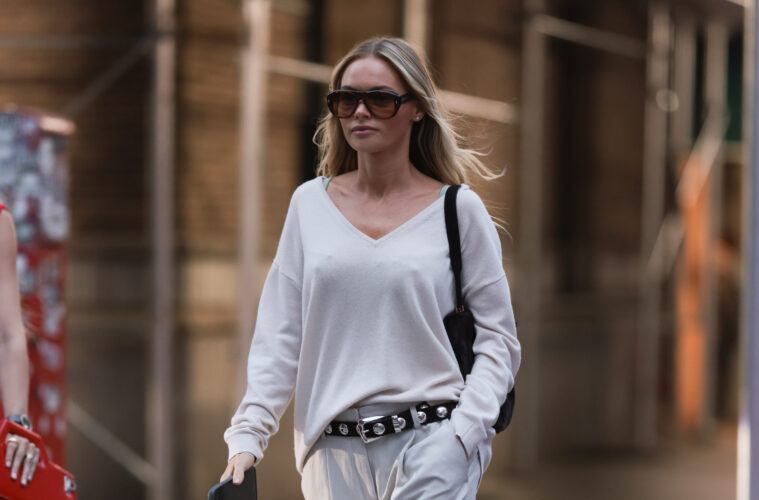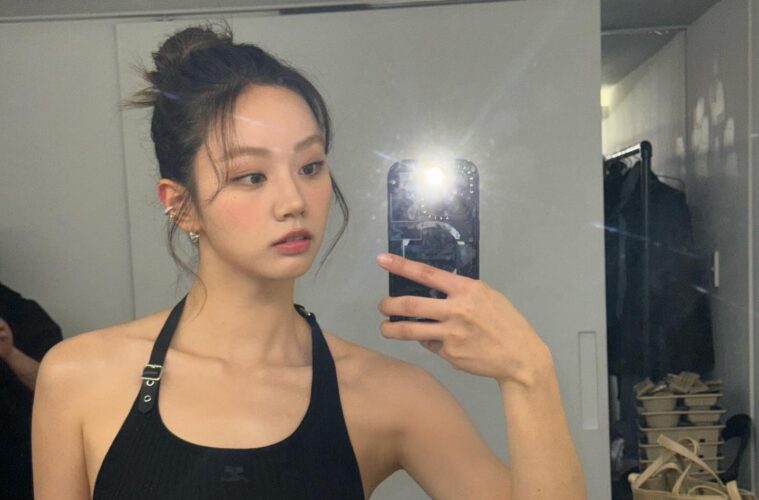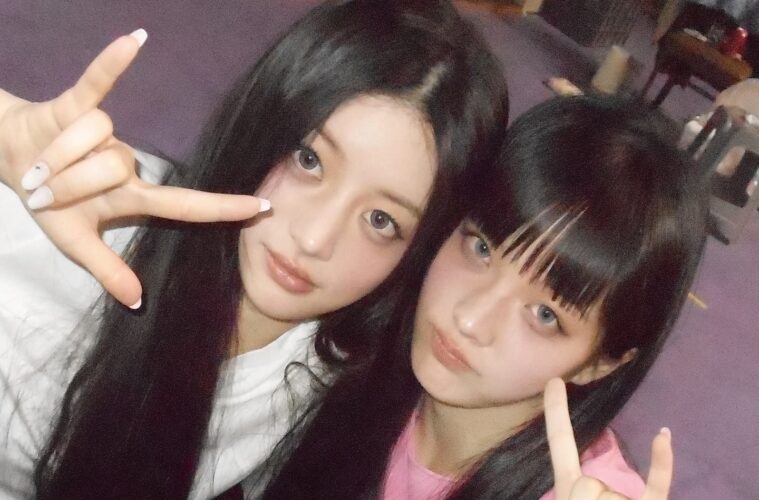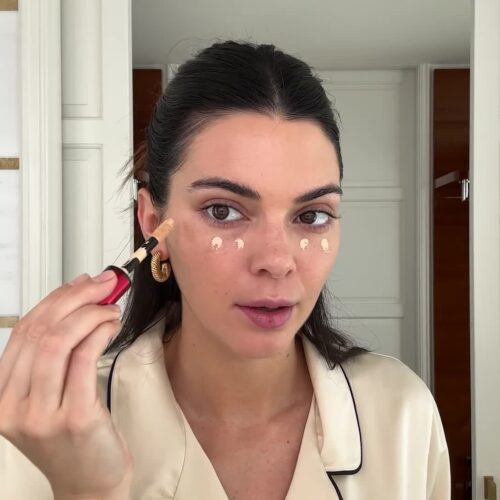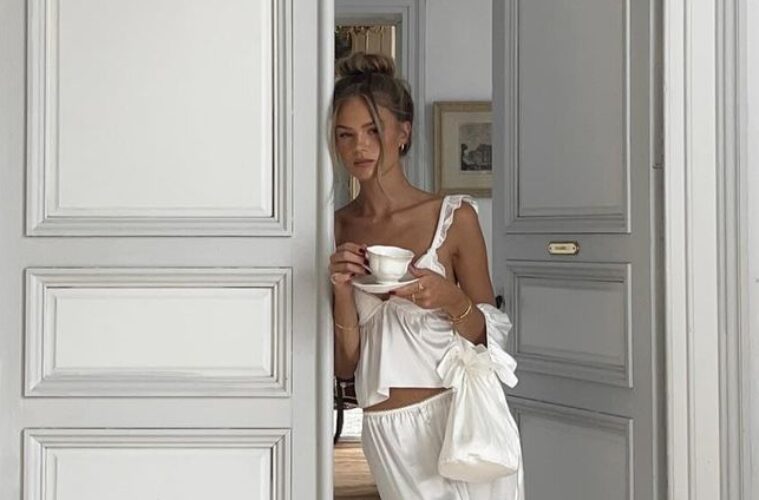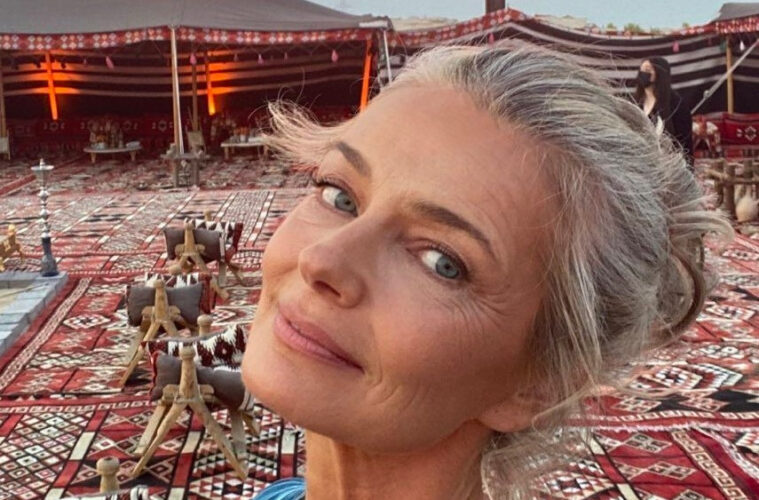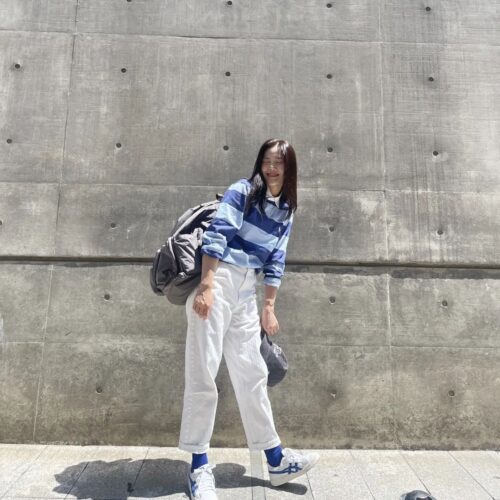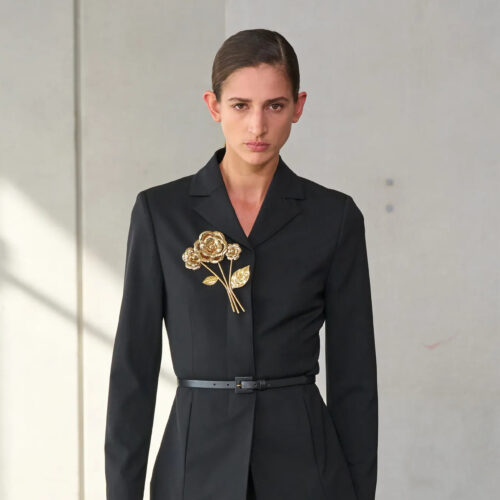서울 예술 침공
나는 한국이라는 나라를 처음으로 방문하며 무엇을 기대했을까?
싸이가 부른 강남스타일의 맹렬하고 발랄한 템포였을까? 서울 외곽에 있는 산들로 만들어진 테두리 내의 고층건물들이었을까? 가로수가 줄지어 심어진 넓은 길가에 즐비한 유명 브랜드들? 아니면 특이한 카페들?
아마도 내가 여행을 준비하면서 알게 되었던 위의 사항들 모두였을 거다. 그러나 그 괴기한 스트립 쇼, 특히나 그걸 에르메스에서 보게 될 줄은 상상도 못했다! 그러나 서울의 럭셔리 브랜드들이 스스로를 고객들에게 홍보하는 방법의 중심에는 예술이 있었다. 특히나 중국 고객들에게 말이다. 중국 고객들은 메르스 사태 동안 어느 정도 감소했을지라도 여전히 큰손이었고 면세점을 가득 메우고 있었다.
패션과 예술이 뒤엉킨 컨셉트는 딱히 새롭지는 않다. 그러나 새천년에 접어들 무렵 유럽과 미국에서 시작된 이러한 마케팅은 전 세계에서 명품을 홍보하는 가장 강력한 툴이 되었다. 전통은 한때 브랜드들이 제품의 질적 수준과 수명을 자랑할 수 있는 방법이었을지 모르지만 이제는 모더니티가 가장 중요하다.
예술과 삶 모두에서 동반자인 안정주와 전소정이 연출한 에르메스 전시는 기괴해 보였다. 나는 에르메스 부티크 안에 자리한 지하 카페에 앉아 그들이 만든 여성누드 바디수트를 보고 있었다. 그 뒤쪽으로 흔들리는 커튼 위에 상영되고 있는 비디오에서도 그 바디 수트가 등장했다.
매장의 나머지는 말 안장과 실크 스카프를 포함해 클래식한 에르메스로 채워져 있었다. 창조적인 예술가들을 지원하는 재단을 가진 브랜드들은 언제나 예술에 관심을 두면서, 젊은 세대가 이끄는 국가에서는 이를 모더니티의 심볼로 삼고 있는 듯 하다.
강남에서도 럭셔리 브랜드들이 모여있는 청담동을 훑어보니 각 매장들은 그 자체로 독특한 건축작품이었다. 지방시의 울퉁불퉁한 건물 외관, 크리스 루스로부터 모티브를 얻은 10 코르소 고모의 거대한 폴카도트, 그리고 크리스티앙 드 포르장파르크가 설계한 디올의 고급스럽지만 파격적인 꽃잎 모양 건물 등 말이다. 기나긴 ‘패션 스트리트’에는 그 일부만 언급하더라도 아르마니부터 토리버치, 페라가모, 구찌, 프라다, 그리고 루이 비통에 이르기까지 거의 모든 유명브랜드들이 운집해있었다.
프라다와 함께 디올은 모던아트를 세일즈툴의 하나로 사용하는 최초의 럭셔리 브랜드 중 하나였다. 이 두 브랜드는 자신들의 매장을 단순한 판매점보다 발전된 모습의 장소로 만들어왔다. 디올은 자하 하디드가 설계한 서울의 랜드마크라 할 수 있는 거대한 동대문 디자인 플라자(DDP)에서 전시회를 열고 있다. 이 디올 정신 전시회는 6월에 매장 오픈과 동시에 시작되었고 파리 본사의 역사에 포커스를 두고 있음에도 불구하고 존 갈리아노와 라프 시몬스를 비롯해 전 〮현직 디올 디자이너의 의상들도 함께 전시하고 있다. 또한 디올과 콜라보레이션을 한 한국 디자이너 6명의 작품들도 포함됐다.
인테리어 디자이너 피터 마리노가 만들어낸, 다채로운 텍스처의 날렵하고 드라마틱한 은빛 부티크 안에는 고(姑) 다이애나비가 들고 다니던 레이디 디올을 예술적으로 해석한 작품들을 전시한 공간이 마련됐다. 이곳에선 한국 디자이너 박선기가 짙은 회색과 금박종이로 만들어낸 조각작품 등을 만나볼 수 있다.
패션과 예술, 건축 간의 포괄적인 콜라보레이션은 서울에서 그 정점에 도달했을까? 이러한 예술과 패션의 컴비네이션은 더 나아갈 목표가 있을까?
나는 순수예술과 건축은 영원한 반면에 패션은 본질적으로 순간일 수 밖에 없다는 불만에서 패션과 예술 간의 연계가 비롯되었다는 점을 유럽과 미국에서 늘 느껴왔다. 이젠 1년에 10번까지도 열리는 수많은 컬렉션 속에서 얼마나 많은 디자이너들이 자신들의 작품을 날아가는 나비만큼이나 부질없다고 느낄까.
그러나 작금의 상황에 렘 쿨하스가 밀라노에서 만들어낸 고대와 현대예술을 위한 프라다 파운데이션 ‘폰다치오네 프라다’, 또는 건축가 프랭크 게리가 파리에서 설계한 루이비통의 모던아트 파운데이션과 같이 대응할 수는 없을까?
서울의 경우 거대전자기업 삼성이 이 역할을 맡고 있었다. 바로 이 시대의 스타 건축가 마리오 보타, 장 누벨, 그리고 렘 쿨하스가 디자인한 3개의 독립건물들이 모인 리움 삼성미술관을 만든 것이다. 각 건물은 각기 다른 주제를 가지고 있어서 한국의 훌륭한 보물들, 특히나 역사적인 도기 작품이나 로트코와 안젤름 키퍼 등의 현대미술, 그리고 동서양의 다양한 예술작품들을 만나볼 수 있다. 그리고 세 번째 건물은 어린이 교육 및 문화센터다.
미술관 내 어디에서도 삼성의 전자제품이나 디지털제품에 대한 홍보는 찾아볼 수 없었다. 그러나 미술관 관람객을 위해 제공되는 가장 기발한 도구는 디지털을 기반으로 하고 있었다. 대부분의 박물관처럼 해당 오브제에 대해 음성설명을 제공하는 대신 삼성 태블릿은 인터렉티브하게 작동한다. 컴퓨터를 기반으로 하는 이 감각입력도구는 관람객이 다가오면 각 예술작품에 대해 설명을 제공하며 고해상도 이미지나 증강현실을 보여준다.
이는 분명 미래의 미술관 안내방식이다. 그리고 어쩌면 미술관 관람객들 머리 속에 핸드폰이나 디지털 노트패드를 사야겠다고 삼성의 이름이 각인될지 모르겠지만 미술과 상업성 사이에 직접적인 연관은 없었다.
그저 좀더 모던하고 다이내믹해 보일 뿐이었다.
English Ver.
Seoul’s Art Attack
What was I expecting from Korea on my first visit to the country?
Was it the furious, youthful tempo of Psy’s Gangnam Style? The high-rise buildings framed by the mountains surrounding Seoul? Famous brands on wide, tree-lined streets? Kooky cafés?
Maybe all of the above, which I had gleaned from researching the trip. But not a surreal striptease – and especially not at Hermès! But art is at the heart of the way that luxury brands in Seoul are presenting themselves to shoppers – particularly the Chinese. Give or take a slowdown during the MERS epidemic, they are still the big spenders, crowded into Duty Free stores.
The concept of entwining fashion and art does not seem particularly new, but what started in Europe and America around the turn of the millennium has become the most powerful tool for promoting luxury across the world. Heritage may once have been the method by which brands touted their quality and their longevity, but now, modernity is key.
The Hermès presentation by Jeong Ju Ahn and So Jung Jeon, partners in art and life, seemed surreal: I sat in the lower-ground floor café of the boutique looking at their bodysuit of a nude woman, which appeared in front of me again on the video projected behind floating curtains.
The rest of the store was classic Hermès, saddles and silk scarves included. The art, always an interest to a brand with a foundation for the creative arts, was, I suppose, a symbol of modernity in a country with a young demographic.
Looking down Cheongdam-dong, a street of luxury lables in the Gangnam-gu district, each store was a unique work of architecture: Givenchy’s knobbly surface; 10 Corso Como’s giant polka-dot motifs from artist Kris Ruhs; and Dior’s noble but sensual petal-shaped building by Christian de Portzamparc.
The long ‘fashion street’ included just about every star name, from Armani through Tory Burch, Ferragamo, Gucci, Prada, and Louis Vuitton – to name just a few.
Dior, along with Prada, was one of the first luxury companies to use modern art as a sales tool. Both brands have given their stores something more elevated than just a shop. Dior has an exhibition in Seoul’s massive Dongdaemun Design Plaza (or DDP), a city landmark by architect Zaha Hadid. This Esprit Dior fashion exhibition opened in June at the same time as the store and, although focused on the history of the Parisian house, is interspersed with clothes of recent or current Dior designers including John Galliano and Raf Simons. Art works by six Korean designers who collaborated with Dior and are also included.
In the boutique itself – a streamlined and dramatic silver structure, rich in texture, by interior designer Peter Marino – there is an area devoted to artists’ visions of the handbag once carried by the late Diana, Princess of Wales. An example is a sculpted piece in charcoal and gilded paper from Korean artist Seon-Ghi Bahk.
Has the general collaboration between art and architecture in the fashion world reached its zenith in Seoul? Is there anywhere else for this art/fashion combination to go?
I had always felt that in both Europe and America, the link between fashion and art grew from a frustration that fine art and architecture can be for ever, while fashion is essentially fleeting. With so many collections – now up to 10 a year – how much more must designers feel that their work is as insubstantial as a passing butterfly?
But why not respond to the situation as Prada has done in Milan with its Rem Koolhaas-designed Fondazione of art works ancient and modern; or Louis Vuitton in Paris with a dedicated modern art foundation from architect Frank Gehry?
In Seoul, Samsung, the electronics giant, has done just that, creating The Leeum Samsung Museum of Art, a cluster of three separate buildings by the contemporary ‘starchitects’ Mario Botta, Jean Nouvel and Rem Koolhaas. Each has a dedicated subject, showing respectively some of Korea’s greatest treasures, particularly historic ceramics; modern and contemporary art with works from Rothko to Anselm Kiefer and combining artists from East and West; while the third building is a children’s education and culture centre.
Nowhere in the museum area did I see any promotion of Samsung’s electronic and digital devices. Yet the most ingenious museum visitor tool is a digitally driven. A Samsung tablet, instead of offering a voice description of selected objects, as in most museums, is interactive. This computer-generated sensory input thus provides information on each work of art as the visitor approaches, and shows the image in high-resolution and also augmented reality.
This is surely the future of museum information, and while Samsung’s name might inspire a museum visitor to buy its mobile phones or digital note pads, there is no direct connection between art and commerce.
It seems more modern and dynamic that way.
최신기사
- 에디터
- 수지 멘키스
추천기사
-

패션 트렌드
지금 스니커즈와 가장 잘 어울리는, 이 계절의 드레스
2024.04.16by 이소미, Renata Joffre
-

셀러브리티 스타일
화이트로 완성한 젠데이아의 테니스 패션 4
2024.04.16by 오기쁨
-

패션 아이템
카프리 팬츠, 피할 수 없다면 즐기세요
2024.04.16by 안건호
-

패션 아이템
올해 화이트 스커트는 '이 슈즈'와 함께하세요
2024.04.16by 이소미
-

엔터테인먼트
칸영화제에 초청된 생 로랑 프로덕션 작품 3
2024.04.16by 오기쁨
-

셀러브리티 스타일
상상 그 이상, 도자 캣의 2024 코첼라 패션 모먼트
2024.04.16by 오기쁨


